Featured image credit: SpaceX
Liftoff Time | April 7, 2023 – 04:29 UTC | 00:29 EDT |
|---|---|
Mission Name | Intelsat 40e/TEMPO |
Launch Provider | SpaceX |
Customer | Intelsat and NASA |
Rocket | Falcon 9 Block 5 B1076-4; 38.22-day turnaround |
Launch Location | Space Launch Complex 40 (SLC-40), Cape Canaveral Space Force Station, Florida, USA |
Payload mass | 6,000-7,000 kg |
Where are the satellites going? | Geostationary Transfer Orbit |
Will they be attempting to recover the first stage? | Yes |
Where will the first stage land? | Downrange on A Shortfall Of Gravitas |
Will they be attempting to recover the fairings? | The fairing halves will be recovered from the water downrange by Doug |
Are these fairings new? | TBD |
How’s the weather looking? | The weather is currently 85% go for launch (as of April 3, 2023 13:30 UTC) |
This will be the: | – 216th Falcon 9 launch – 150th Falcon 9 flight with a flight-proven booster – 156th re-flight of a booster – 22nd re-flight of a booster in 2023 – 184th booster landing – 110th consecutive landing (a record) – 23rd launch for SpaceX in 2023 – 120th SpaceX launch from SLC-40 – 56th orbital launch attempt of 2023 |
Where to watch | Once available, an Official Livestream will be listed here |
What’s This All Mean?
SpaceX is set to launch the Intelsat 40e satellite for Intelsat, which will host NASA’s tropospheric emissions: monitoring of pollution (TEMPO) spacecraft. The Falcon 9 will lift off from Space Launch Complex 40 (SLC-40) at the Cape Canaveral Space Force Station, in Florida, USA. This launch will mark SpaceX’s 23rd launch of 2023–a launch every 4.2 days.
What Is Intelsat 40e?
The Intelsat 40e (IS-40e) is a high-throughput geostationary communications satellite built by Maxar Technologies and operated by Intelsat. The satellite will provide Intelsat customers across North and Central America with flexible coverage. The satellite has a lifetime of 15 years, made possible by two large deployable dollar arrays and batteries. The spacecraft is powered by four SPT-100 plasma thrusters, which will allow the spacecraft to raise its orbit from GTO.
Intelsat 40e is based on Space System Loral’s SSL-1300 satellite bus. Having been used on a large number of other satellites, including most of Intelsat’s satellites, this bus provides is reliable and gives the satellite 45 C-band transponders and 20 Ku-band. The C-band transponders allow for mobile backhaul services, which allow mobile network operations to extend their coverage in remote and rural areas. The Ku-band transponders, on the other hand, offer high-speed connectivity. The satellite will also host NASA’s TEMPO mission.
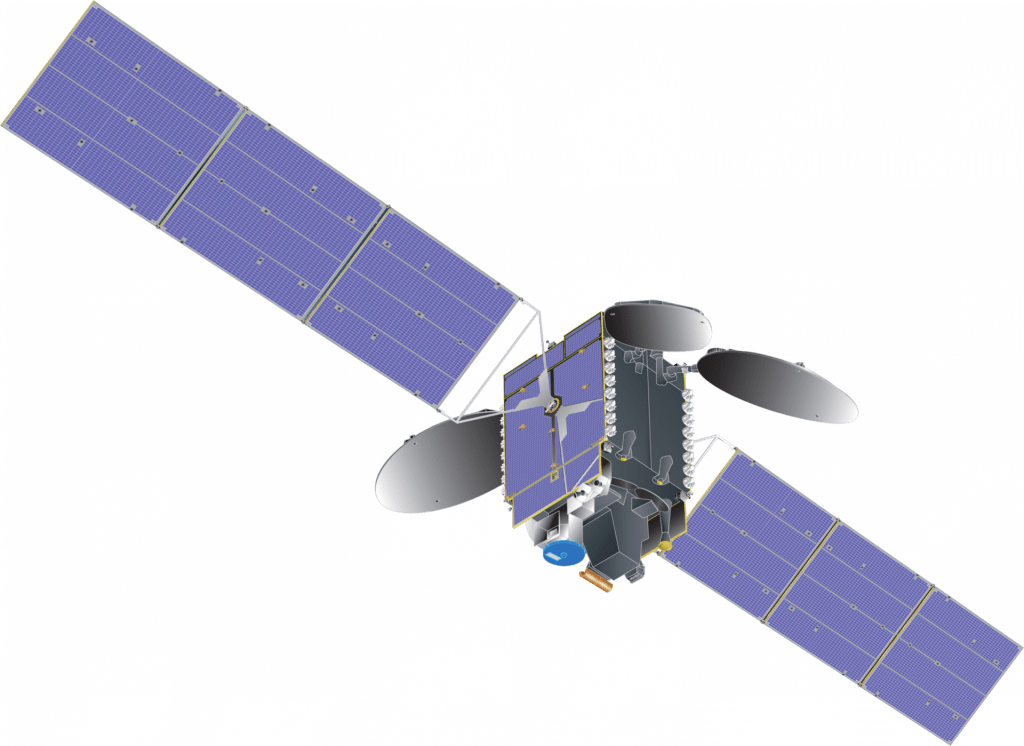
What Is TEMPO?
The Tropospheric Emissions: Monitoring of Pollution (TEMPO) spacecraft is a UV-visible spectrometer that will measure air quality across North America. The TEMPO payload was built by Ball Aerospace in collaboration with NASA and the Smithsonian Astrophysical Observatory. It will provide unprecedented air quality measures over North America, which will help scientists better understand the effects of air pollution on human health. Additionally, the data collected by this spacecraft will be used to improve air quality forecasts, which will help reduce exposure to harmful pollutants.
TEMPO will constantly be pointed toward the Earth, using light-collecting mirror scans for a constant east-to-west field of regard. The spacecraft measures reflected sunlight from the Earth’s surface and atmosphere.
What Is Falcon 9 Block 5?
The Falcon 9 Block 5 is SpaceX’s partially reusable two-stage medium-lift launch vehicle. The vehicle consists of a reusable first stage, an expendable second stage, and, when in payload configuration, a pair of reusable fairing halves.
First Stage
The Falcon 9 first stage contains nine Merlin 1D+ sea-level engines. Each engine uses an open gas generator cycle and runs on RP-1 and liquid oxygen (LOx). Each engine produces 845 kN of thrust at sea level, with a specific impulse (ISP) of 285 seconds, and 934 kN in a vacuum with an ISP of 313 seconds. Due to the powerful nature of the engine, and the large amount of them, the Falcon 9 first stage is able to lose an engine right off the pad, or up to two later in the flight, and be able to successfully place the payload into orbit.
The Merlin engines are ignited by triethylaluminum and triethylborane (TEA-TEB), which instantaneously burst into flames when mixed in the presence of oxygen. During static fire and launch the TEA-TEB is provided by the ground service equipment. However, as the Falcon 9 first stage is able to propulsively land, three of the Merlin engines (E1, E5, and E9) contain TEA-TEB canisters to relight for the boost back, reentry, and landing burns.
Second Stage
The Falcon 9 second stage is the only expendable part of the Falcon 9. It contains a singular MVacD engine that produces 992 kN of thrust and an ISP of 348 seconds. The second stage is capable of doing several burns, allowing the Falcon 9 to put payloads in several different orbits.
For missions with many burns and/or long coasts between burns, the second stage is able to be equipped with a mission extension package. When the second stage has this package it has a grey strip, which helps keep the RP-1 warm, an increased number of composite-overwrapped pressure vessels (COPVs) for pressurization control, and additional TEA-TEB.
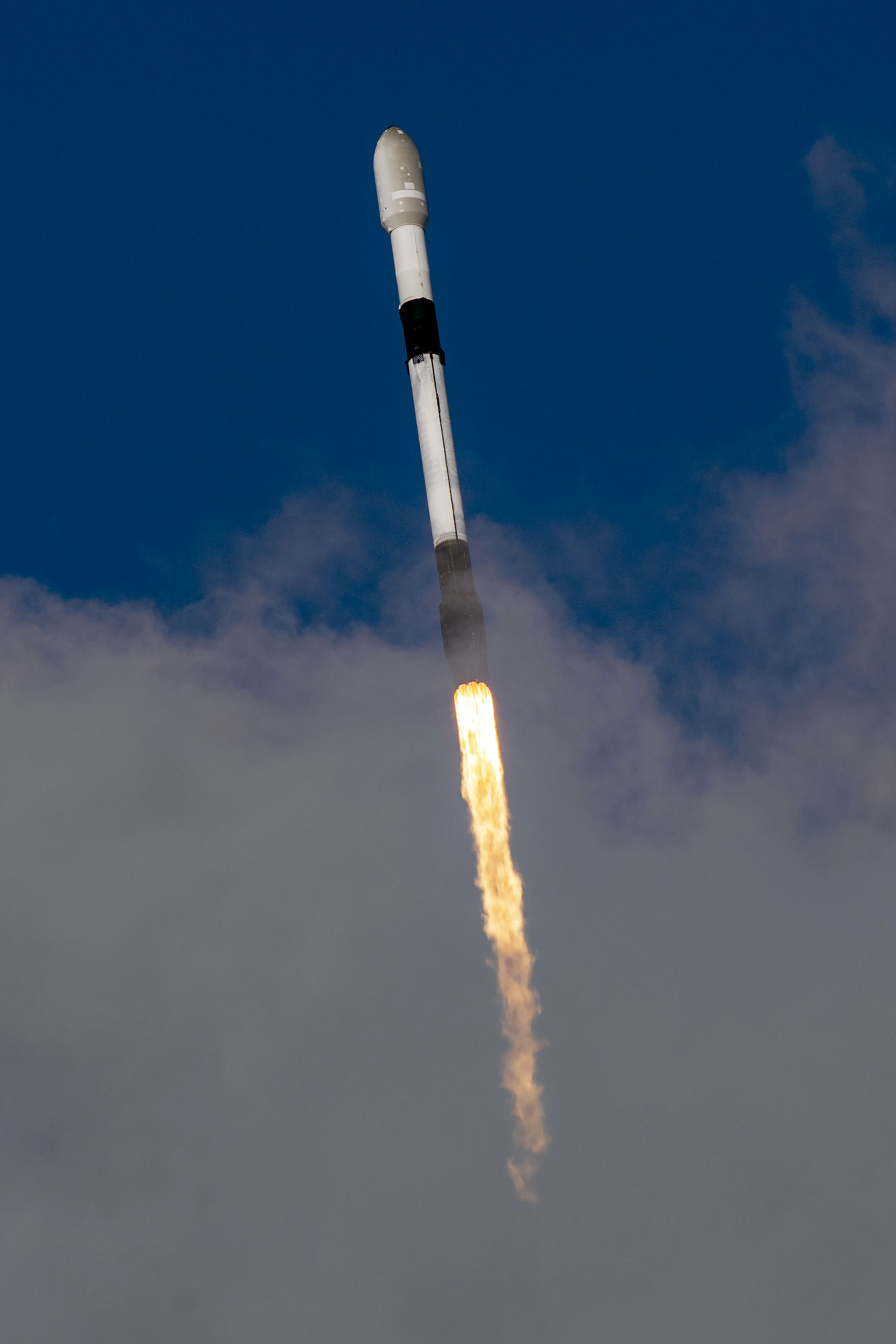
Falcon 9 Booster
The booster supporting the Intelsat 40e/TEMPO mission is B1076-4; as the name implies, the booster has flown three previous times. The booster’s designation will change to B1076-5 upon successful landing.
| B1076’s missions | Launch Date (UTC) | Turnaround Time (Days) |
| CRS-26 | November 26, 2022 19:20 | N/A |
| OneWeb 16 | January 10, 2023 04:50 | 44.40 |
| Starlink Group 6-1 | February 27, 2023 23:13 | 48.77 |
| Intelsat 40e/TEMPO | April 7, 2023 04:29 | 38.22 |
Following stage separation, the Falcon 9 will conduct two burns. These burns aim to softly touch down the booster on SpaceX’s A Shortfall Of Gravitas.
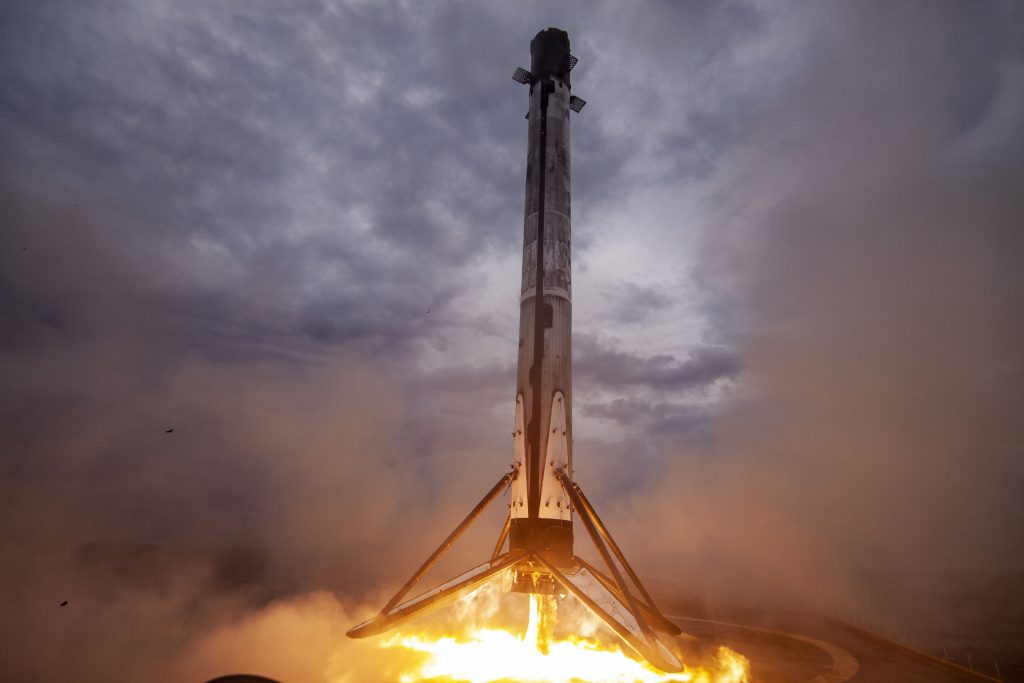
Falcon 9 Fairings
The Falcon 9’s fairing consists of two dissimilar reusable halves. The first half (the half that faces away from the transport erector) is called the active half, and houses the pneumatics for the separation system. The other fairing half is called the passive half. As the name implies, this half plays a purely passive role in the fairing separation process, as it relies on the pneumatics from the active half.
Both fairing halves are equipped with cold gas thrusters and a parafoil which are used to softly touch down the fairing half in the ocean. SpaceX used to attempt to catch the fairing halves, however, at the end of 2020 this program was canceled due to safety risks and a low success rate. On Intelsat 40e, SpaceX will attempt to recover the fairing halves from the water with their recovery vessel Doug.
In 2021, SpaceX started flying a new version of the Falcon 9 fairing. The new “upgraded” version has vents only at the top of each fairing half, by the gap between the halves, whereas the old version had vents placed spread equidistantly around the base of the fairing. Moving the vents decreases the chance of water getting into the fairing, making the chance of a successful scoop significantly higher.


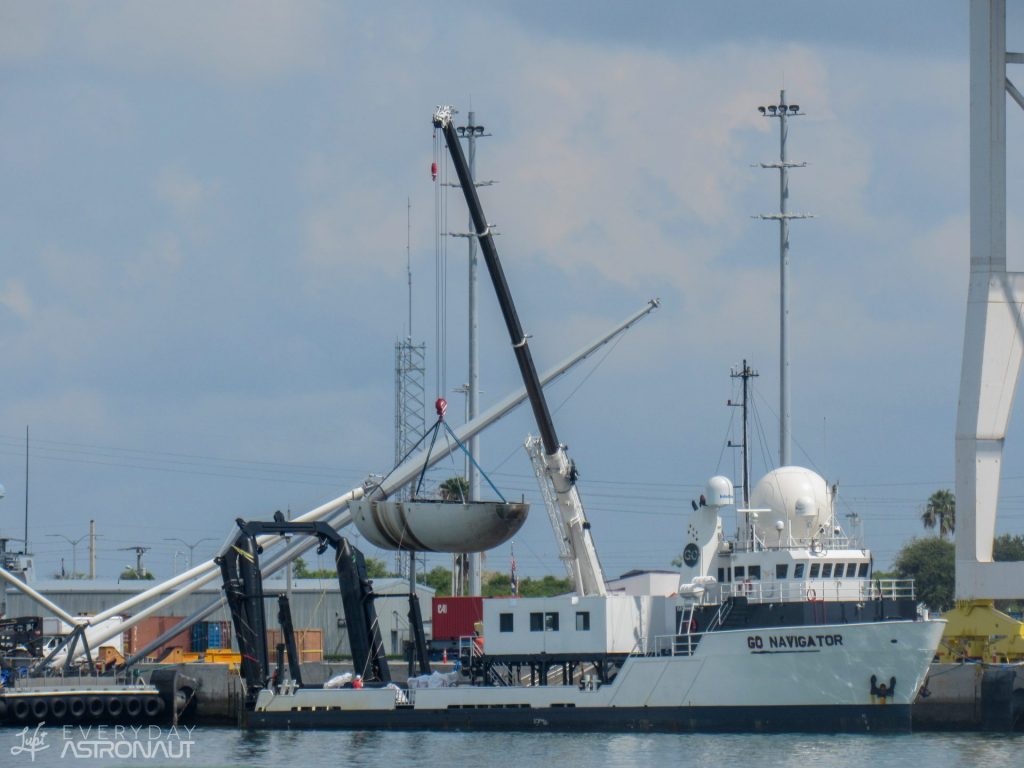
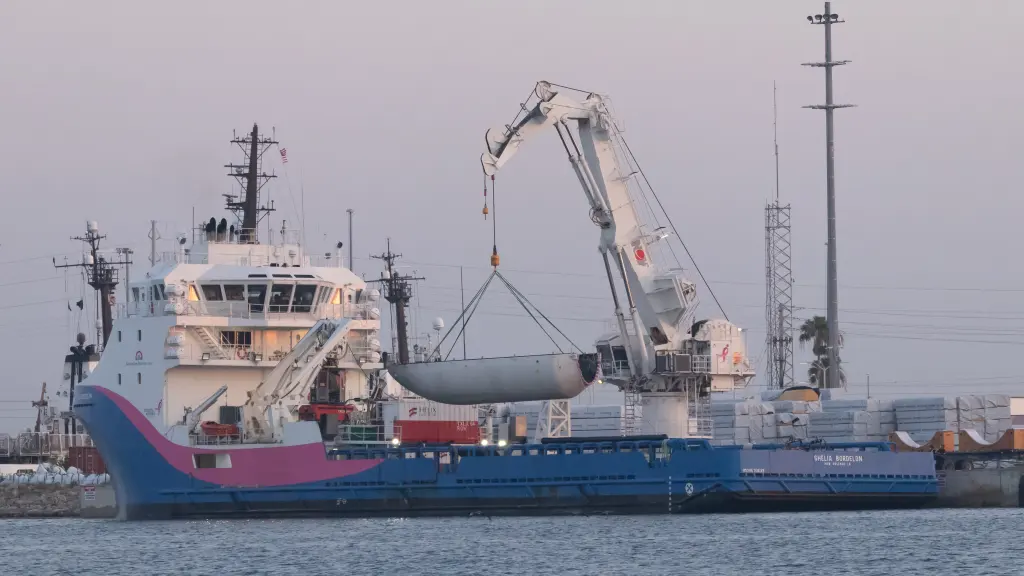
Intelsat 40e/TEMPO Countdown
All times are approximate
| HR/MIN/SEC | EVENT |
|---|---|
| 00:38:00 | SpaceX Launch Director verifies go for propellant load |
| 00:35:00 | RP-1 (rocket grade kerosene) loading underway |
| 00:35:00 | 1st stage LOX (liquid oxygen) loading underway |
| 00:16:00 | 2nd stage LOX loading underway |
| 00:07:00 | Falcon 9 begins engine chill prior to launch |
| 00:01:00 | Command flight computer to begin final prelaunch checks |
| 00:01:00 | Propellant tank pressurization to flight pressure begins |
| 00:00:45 | SpaceX Launch Director verifies go for launch |
| 00:00:03 | Engine controller commands engine ignition sequence to start |
| 00:00:00 | Falcon 9 liftoff |





